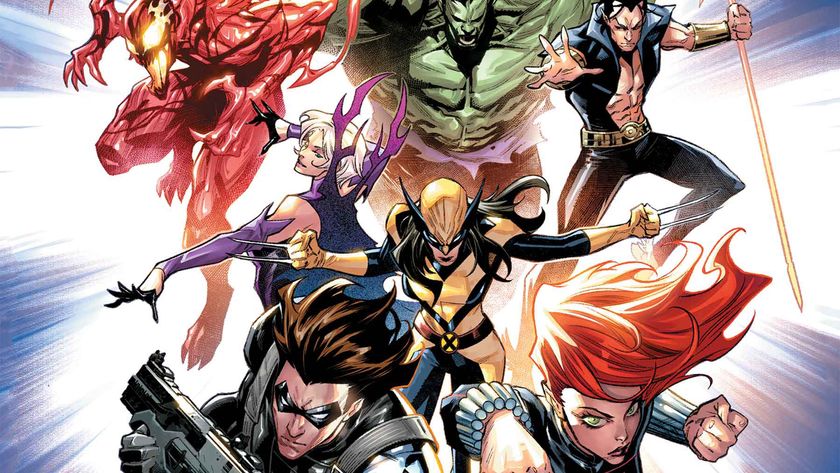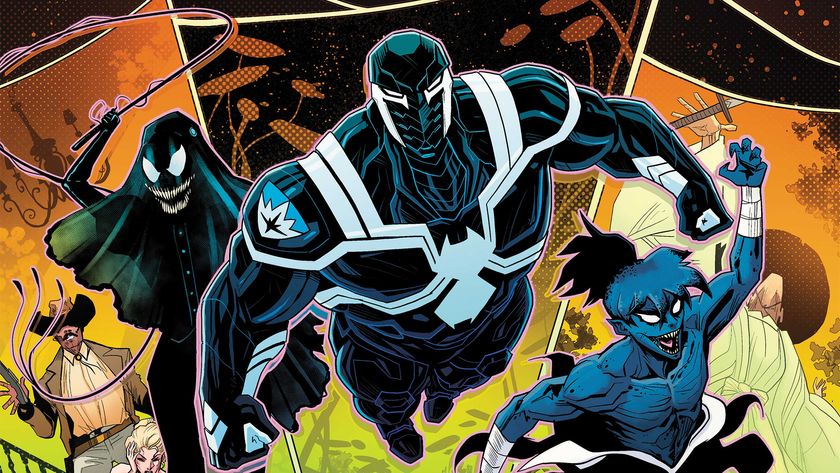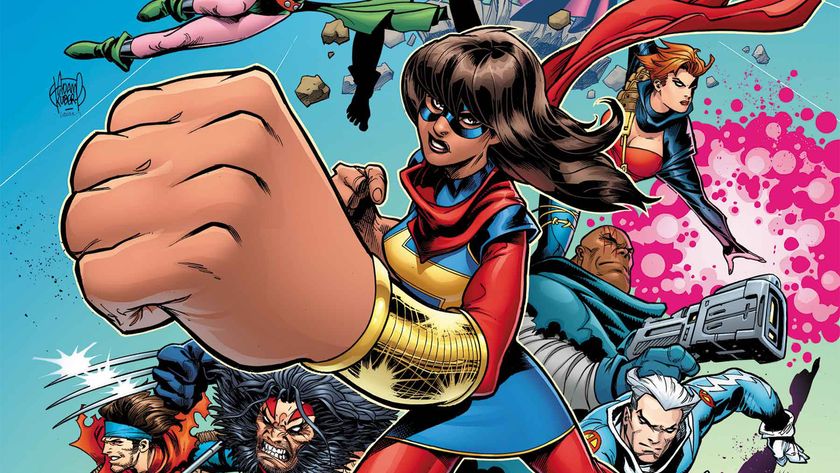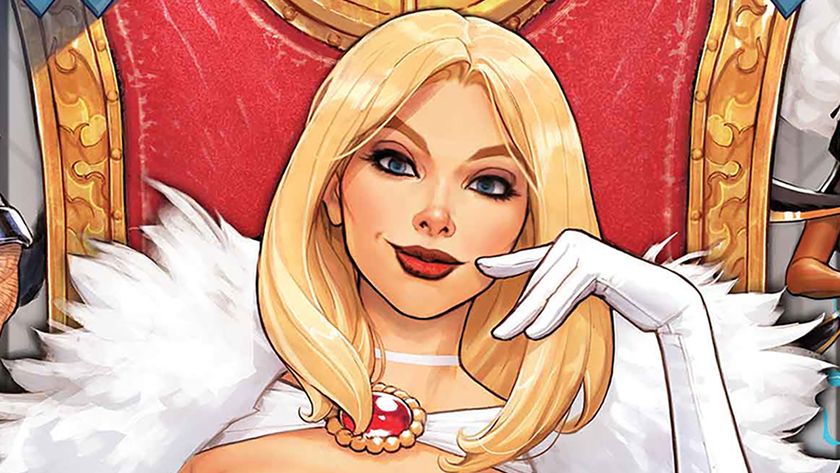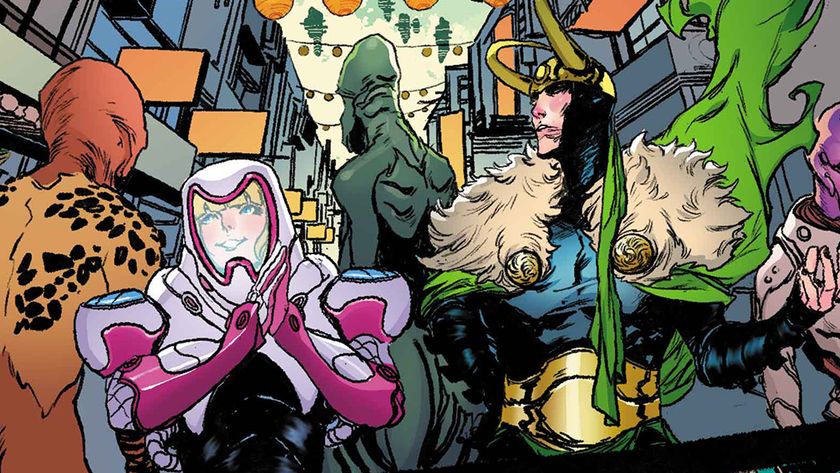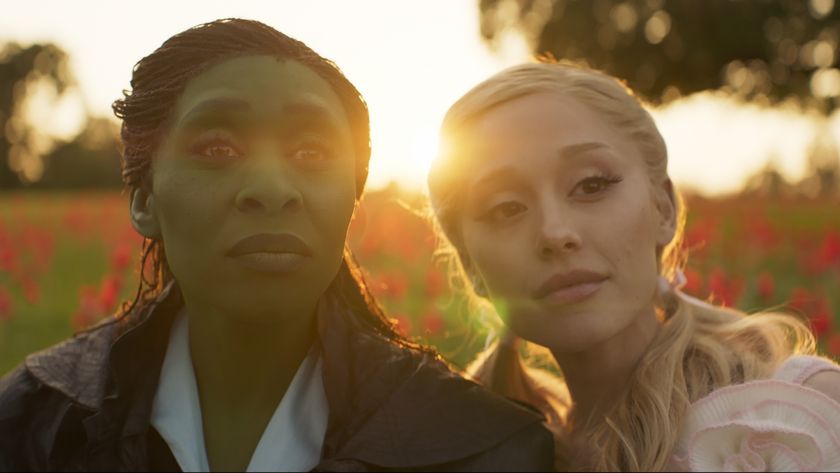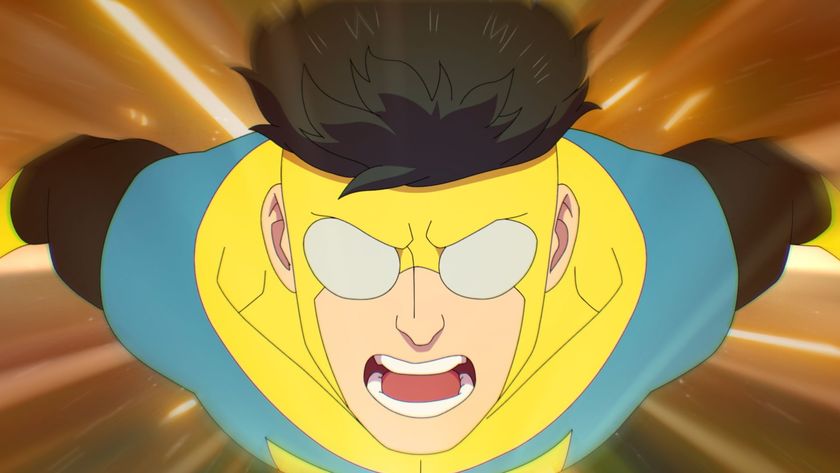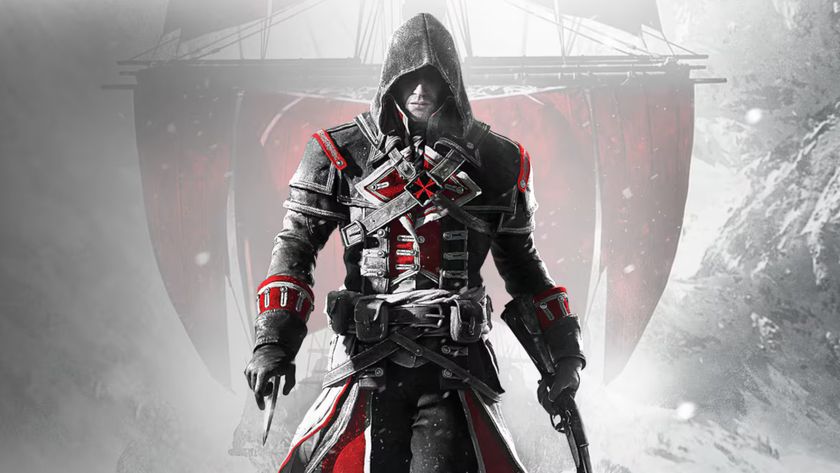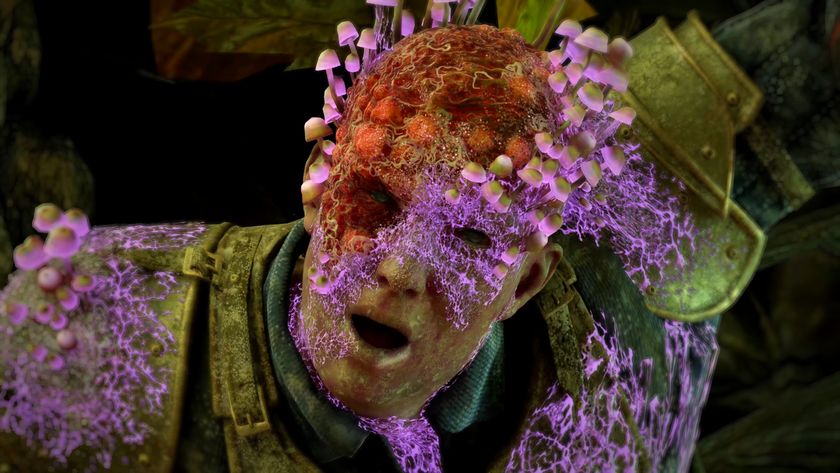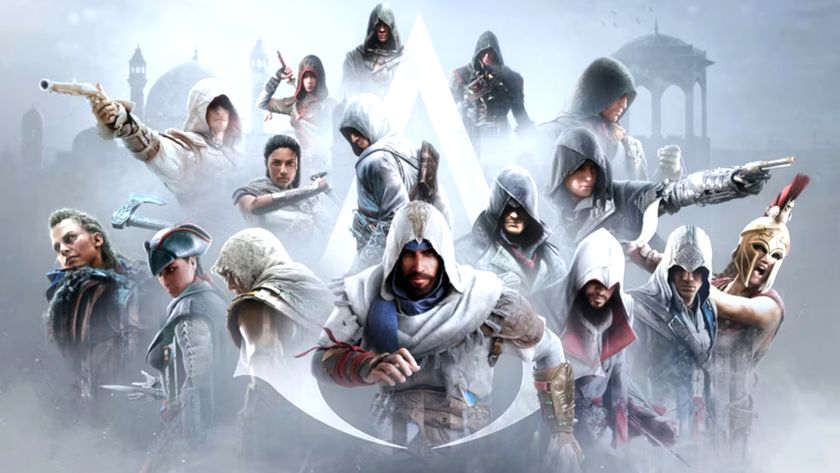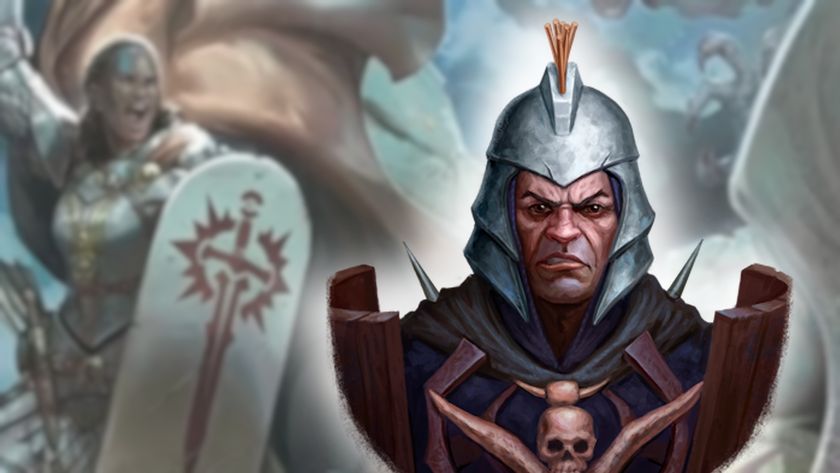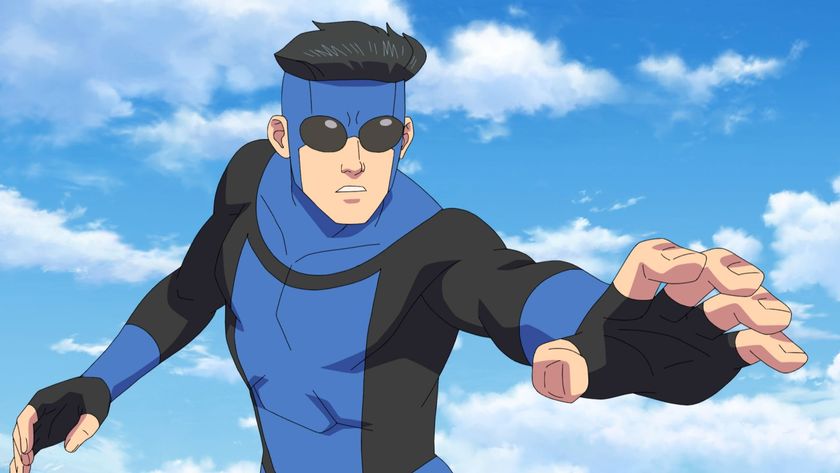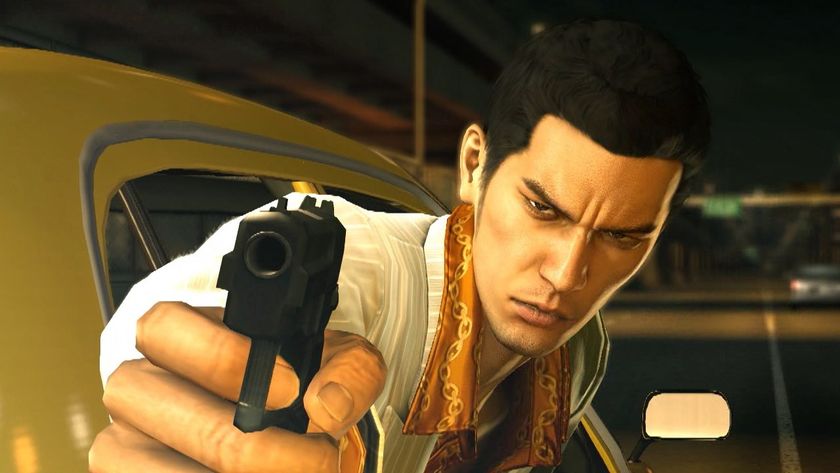Black Knight takes on the Avengers in redefining Curse of the Ebony Blade #1
Writer Simon Spurrier continues his quest to revitalize and redefine the Black Knight in Curse of the Ebony Blade
Writer Simon Spurrier began his revitalization of Marvel's Black Knight, Dane Whitman, in a one-shot tying into King in Black. Now, in Black Knight: Curse of the Ebony Blade, a subsequent five-issue limited series alongside artist Sergio Davila, Spurrier will continue to make a case for Black Knight as Marvel's most underrated hero.
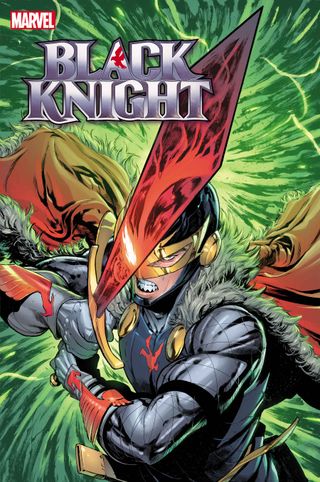
King in Black: Black Knight introduced the concept that, rather than paragons of virtue, the line of Whitman's ancestors who inhabited the role before him - from the first Black Knight, Sir Percy of Scandia through to Whitman's predecessor/relative, the villainous Nathan Garret - are actually the warriors most susceptible to the corrupting power of the cursed Ebony Blade, forged by Merlin of King Arthur's court.
Leaning into that simple twist on Whitman's legacy (which goes all way back to when the Black Knight Sir Percy was the hero of a historical fantasy comic in Marvel's pre-superhero Atlas Comics era), Spurrier will expand on what he calls the "Marvelization of Camelot," drawing on Arthurian myth to create a new role for the Black Knight in the Marvel Universe.
Newsarama spoke to Spurrier ahead of Black Knight: Curse of the Ebony Blade #1's March 17 release to discuss the writer's plan for putting Dane Whitman in the spotlight of the Marvel Universe, and how the writer hopes to simplify Whitman's ever-more-complex backstory through his new take on the power of the Ebony Blade.
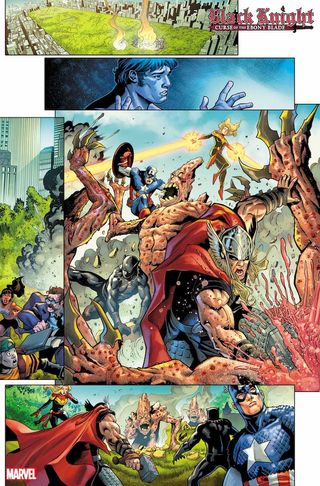
Newsarama: Simon, you started your quest to reinvigorate Dane Whitman as a Marvel Comics A-lister in King in Black: Black Knight #1, which revealed a big secret about Dane's nature as the Black Knight. How did you arrive at this particular twist for Dane Whitman and the legacy of the Black Knight?
Simon Spurrier: I'm a sucker for that sort of creative challenge, I guess. He's one of those characters which has gone through a billion retcons and reinventions. Some of them stuck, some of them didn't, but you're left with this poor guy whose history is so complex it's difficult to do anything new without contradicting something or other.
He's a guy who carries a cursed sword which originated in Arthurian Camelot. That seems to be the only roughly constant throughline.
Comic deals, prizes and latest news
Get the best comic news, insights, opinions, analysis and more!
Well, rather than trying to ignore all of the raggedy dysfunction and uncertainty, nor indeed leaning so far into it that it becomes an impenetrable morass, my goal was to find a way of using it all to realign the character's position in the Marvel Universe. Giving him an elegant, easily-explicable set up so people can enjoy his stories
Put simply: the sword he carries is like the opposite of Thor's Mjolnir. The Ebony Blade is at its mightiest when it's feeding on the negativity - the rage, sadness, guilt, and hate - of its wielder.
That puts the Black Knight in a fascinating and tragic position. The more useful he is as a hero, the deeper he slides into his own self-destructive darkness. Tricky...
Nrama: By embracing the idea that, through Marvel History, many Black Knights have been villains (including Dane's direct predecessor), what doors does that open for Dane as a hero and as a character?
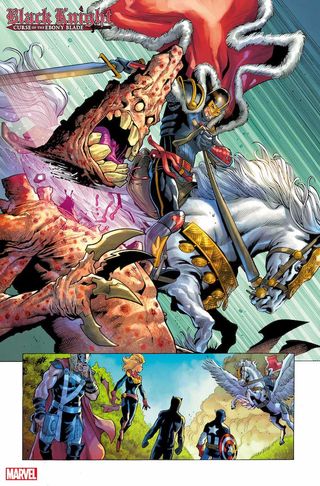
Spurrier: It's all about inner conflict, isn't it? That's the basis of all great heroic stories, however much people might want to focus on the muscles and weapons and explosions. The potential for a hero's flaws to outweigh their strengths. The unique problem Dane faces - and I love how utterly Marvel-esque this is - is that his flaws are his strength. How does he deal with that? Does he accept it and let it swallow him? Does he try to turn his back on all his dreams and expectations? Or does he search for a third way, to give him balance?
I can't quite believe I'm about to be as recklessly sophomoric as to actually quote Nietzsche in an interview, but hey, let's enjoy the gloom: "He that fights monsters must take care lest he become a monster."
Nrama: By extension, how does the idea that the nature of Dane Whitman's family as 'flawed' warriors play into Curse of the Ebony Blade? How will Dane's relationship with the sword evolve?
Spurrier: Ah, well. I can't give much away about that. You'll see in #1 that there's still an awful lot of secrets and tricks swirling around the Ebony Blade that nobody suspects.
There's a huge beat, right there in the middle of the first issue, which will change everything.
My first variant cover for Marvel. Black Knight 3. Tribute to the classic cover of the fantastic Ron Frenz. I am very happy!!!! Thanks @sispurrier 😀😀😀. Team Black Knight!!👍🏻👍🏻 pic.twitter.com/whqFco8vVOFebruary 18, 2021
Nrama: What's Black Knight up against in Curse of the Ebony Blade, specifically? The solicitations mention a new villain with ties to Arthurian artifacts. What can you tell us about that?
Spurrier: I really can't say much, as you'd imagine.
You can expect a whole passel of huge guest stars - beginning with the literal actual in-the-flesh Avengers and not letting up - and among that number are a couple of villains you're going to love to hate.
Dane's quest, such as it is, is to finally understand who he is, what role he has to play in the world, and what strange histories have brought him to this point.
Unfortunately, he must answer these questions while being hunted by one of the most potent big bads in the Marvel canon...
Nrama: Speaking of which, how does the lore of Arthurian legend inform this story, as you revisit Black Knight's origins?
Spurrier: It's a major part of the book. I've always been a geek for the Arthurian cycles, and it's an honor to guide the Marvelization of Camelot.
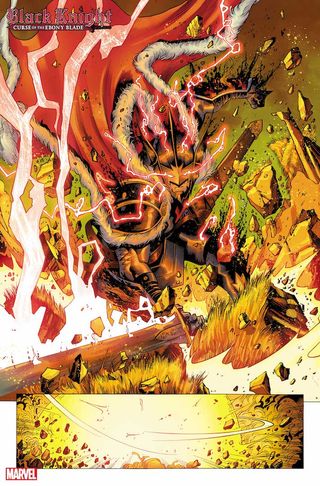
To give a little taste of that, one of the maddening things about Arthurian fiction is that the historical trappings we usually see are so obviously anachronistic. Like, our modern conception of Camelot with its jousting tournaments, maidens in distress, chivalric romances, and all that, are quite obviously derived from much later middle-medieval notions. Sort of like me telling a story set in the court of Henry the Eighth, where everyone's driving around in golf buggies and shouting about nukes.
If you tried to figure where and when Arthur's court actually existed… well, you'd fail. But you'd realize you're dealing with a timeframe of about 300 or 400 years and endless possible locations, none of which show any convincing confirmation of the stories.
So... I leaned into that. Found a reason that the history and the myth don't tally.
I can't say much more than that - it's pretty cool, though. But thanks to this one conceit we've been able to kinda run amok with the notion of what the MU version of Camelot was really like.
Short version: as Manhattan is to the modern Marvel Universe, so Camelot was to the early Middle Ages.
Nrama: You're working with artist Sergio Davila on Black Knight: Curse of the Ebony Blade. What's it been like developing that relationship? What does he bring to a title like this?
Spurrier: He's incredible. You get the sense he's spent his whole life just waiting for the chance to draw some sword smashing, armor-hacking, magic-blasting action.
Excellent monsters, crackling action, perfect character acting. Can't ask for more.
Nrama: You've got five issues to show the world that Dane Whitman deserves to be Marvel's next big leading man. What are your big strategies for making that happen?
Spurrier: Write good story.
Make character conflicted.
Have stuff blow up.
Introduce butler with a goat's Head.
Get unexpectedly dark.
Kill things.
Kill more things.
Blood.
So much blood.
Quips.
More blood.
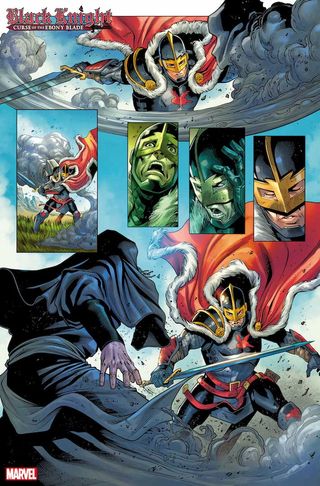
Nrama: On that note, with the knowledge that you're not involved in the film side of Marvel, how does it feel to be bringing Black Knight back to the spotlight as he's about to become more of a household name than ever thanks to his role in the upcoming Eternals movie?
Spurrier: It's pretty neat!
And no, I know nothing about the movie. Stop fishing. Shame on you.
Nrama: I have to ask, will Sersi or the Eternals play a role in Dane's new comic book status quo?
Spurrier: Not as such.
But sort of.
No. Yes. Ish?
Nrama: For that matter, how much of Black Knight: Curse of the Ebony Blade will take place in the UltraVerse? I'm only half-joking.
Spurrier: None percent, I'm afraid. [laughs]
For this arc, we're very focused on Dane's life, role, and equilibrium. If we get to carry after #5, I have big ideas. But we simply won't know how likely that is until a bit further down the line.
Nrama: What is your mission statement for Black Knight: Curse of the Ebony Blade? What will fans learn about Dane Whitman through this story?
Spurrier: I'd consider it a job well done if readers come away from the story realizing this character - no, let me qualify that; these characters - have an endless bounty of awesome stories within them.
I think during this arc we're going to get a real sense of the problems that have been quietly haunting Dane for many years, which are only now bubbling to the surface. How - or if - he rises to the occasion is of course the meat of the dish.
Nrama: Finally, if all goes well, could we expect to see more Black Knight from you in the future?
Fingers, gauntlets, broadsword, and misericordes all crossed. We can but hope.
As an Avenger since the '60s, Black Knight has been part of some of the best Avengers stories of all time.
I've been Newsarama's resident Marvel Comics expert and general comic book historian since 2011. I've also been the on-site reporter at most major comic conventions such as Comic-Con International: San Diego, New York Comic Con, and C2E2. Outside of comic journalism, I am the artist of many weird pictures, and the guitarist of many heavy riffs. (They/Them)
